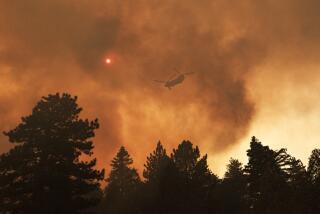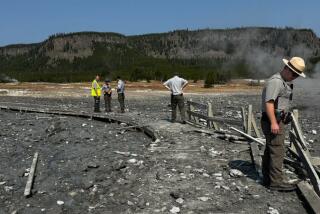Mt. St. Helens Vents Again
- Share via
MT. ST. HELENS NATIONAL VOLCANIC MONUMENT, Wash. — Mt. St. Helens shot off a spectacular cloud of steam and ash Tuesday, dusting some communities miles to the northeast with light ash.
Although some have worried that the recent stirring at the southwest Washington volcano could portend a major eruption, geologists said the more likely scenario was weeks or months of smaller-scale venting, with the possibility that some lava could further enlarge the dome within the mountain’s gaping crater.
“There’s not necessarily going to be a big one,” Jake Lowenstern, a U.S. Geological Survey volcanologist, said. “People have to get that out of their minds.”
Carl Thornber, a USGS scientist, said Tuesday’s steam burst opened up two small new vents in the floor of the crater -- one west of the lava dome and another within the glacier next to the dome.
Another USGS scientist, Jon Major, said the crater floor continued to lift up, a sign that magma, or molten rock, was still building under the volcano. In the last several days, the lava dome within the crater has swelled by about 150 feet.
Mt. St. Helens has been venting steam daily, along with small amounts of ash, since Friday, making it the most active volcano in the lower 48 states and Canada. Tuesday morning’s burst was the largest, with a roiling, dark gray cloud rising thousands of feet above the mountain and streaming miles to the northeast. Lowenstern said the plume had “a significant amount of ash in it.”
Ash fell on the small town of Randle, home to about 2,400 people about 25 miles northeast of the mountain.
“We’re getting a light dusting. We seem to be on the north edge of the column as it’s going over,” said Jack Thorne, public services assistant for the Cowlitz Ranger Station in Gifford Pinchot National Forest.
The town’s two schools were keeping students with asthma inside, and postal workers were given face masks.
More to Read
Sign up for Essential California
The most important California stories and recommendations in your inbox every morning.
You may occasionally receive promotional content from the Los Angeles Times.













